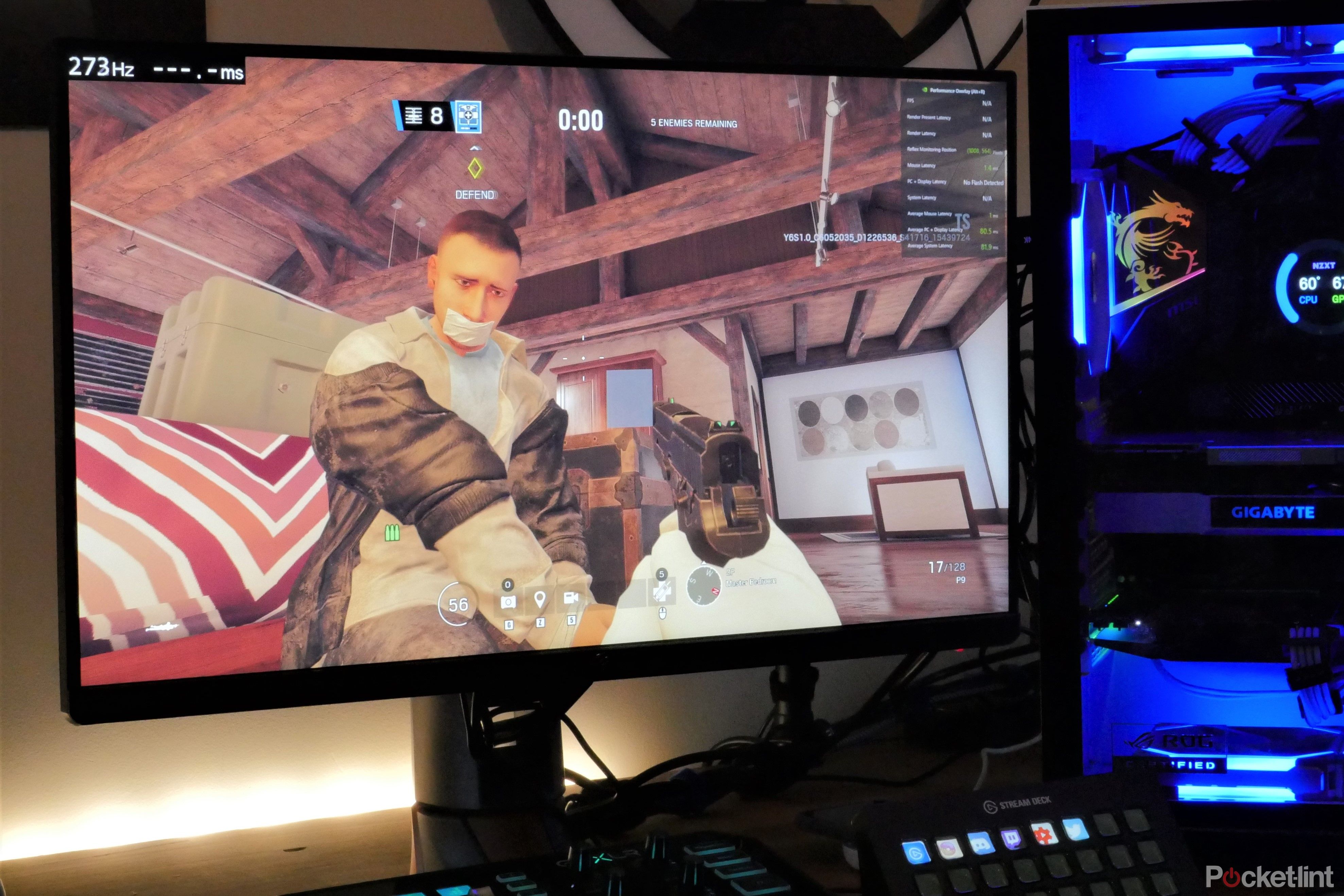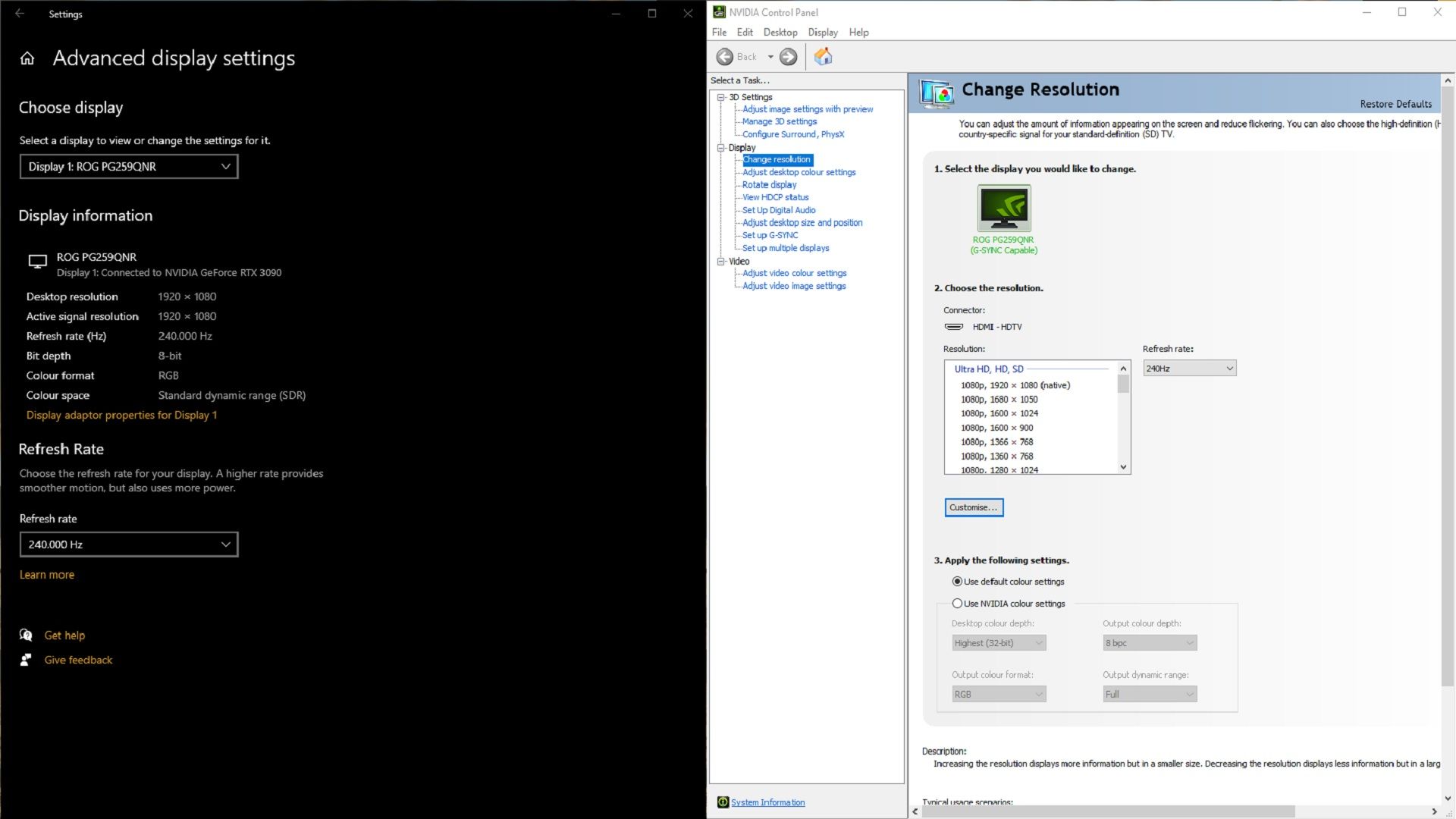If you’re trying to make the most of your gaming PC, then you need to make sure you’re also making the most of your monitor.
If you’ve had your monitor for a while then you might not know the specs of it exactly or you might be wondering what its refresh rate is or how you find out.
Perhaps you aren’t even sure why refresh rate matters and are just happily gaming away with default settings without a second thought. Well, we’re here to help with all the info you need to know.
What is monitor refresh rate?
At a basic level, the refresh rate is about how quickly your monitor can display a new image. When you’re gaming, the visuals from the game are sent from your gaming PC (or console) to your monitor. As the scene changes, that needs to change on the screen too.
A higher refresh rate means the monitor is able to quickly change and show what’s next. This is important when you’re playing fast-paced modern games, where any slowdown in your system or latency can result in you losing a game or missing a shot you should have otherwise won.
Basic monitors usually have a refresh rate of around 60Hz. The more expensive monitors will have 120Hz, 240Hz or even 360Hz options. Though just buying one of those monitors doesn’t mean it’ll run at that refresh rate as standard. You need to change some settings in Windows first.
Why does the refresh rate matter?
You probably already know that when it comes to gaming, the higher the FPS, the better.
If your gaming PC can run games with high FPS (frames per second) then you’ll likely have a smoother experience. But if you have a high FPS game and are only running a low refresh rate monitor then you’re missing out as you’re essentially creating a bottleneck.
If you’ve spent big money on a high-end PC with a decent modern graphics card that’s pumping out hundreds of frames per second but then you’re limiting yourself to 60Hz refresh rate then you’re not feeling the benefits.
How to check your monitor’s refresh rate
The good news is that it’s fairly easy to check your monitor’s refresh rate.
Sometimes you’ll find there are hardware settings on your monitor that you’ll need to access via the menus but for the most part, you can find out what your refresh rate is directly from Windows.
First, you need to open your Windows display settings:
- Right-click on your desktop and click display settings
- Scroll down until you see “advanced display settings”
- Then scroll down to the refresh rate
This will display the refresh rate your monitor and computer are currently set to. It usually defaults to 60Hz, even if your monitor technically has a higher refresh rate.
If you see a drop-down here click it and see if there are any other options for refresh rate. If your monitor is capable of more then you should be able to select a higher rate from here too. For example, you might be able to choose from 120Hz or 240Hz options.
It’s worth noting that some monitors require certain cables in order to work at maximum refresh rate. Depending on your monitor specs you may need either a DisplayPort cable or HDMI cable for the best results. Higher-spec cables like HDMI 2.1 (for example) can support higher refresh rates in some instances. But it depends on your PC and the monitor specs.
If you find you can’t access the display settings by the method above don’t worry as there are other options.
You can access refresh rate settings via Nvidia’s control panel:
- Right-click on your desktop and click the Nvidia Control panel
- Under “display” find the option for “change resolution”
- From there click the refresh rate drop-down and select the highest possible setting
- Note in Windows 11 you may have to click “show more options” in order to see the Nvidia control panel in the menu in the first step
Alternatively:
- Press Windows key + I on your keyboard to launch settings
- Click Display settings
- Scroll down to advanced display settings and click that
- Try the drop-down for “choose a refresh rate” and pick whatever is highest
What’s your current refresh rate?
There’s a neat tool you can use to check your current refresh rate without even clicking settings in Windows. Though this obviously only shows you your current settings, not the maximum setting.
Turn on G-Sync too
If you are making the most of your refresh rate then you’ll also want to check to make sure you are getting the best performance too.
Many modern monitors will support either Nvidia G-Sync or AMD Free-Sync. This is a technology that ensures that the refresh rates of your monitor match your GPU. This reduces screen tearing problems, stuttering and more – ensuring a smooth gaming experience and the best possible results from your equipment.
We’ve written about how to enable G-Sync on your monitor, so be sure to head over and read that before you carry on.
What about latency?
If you’re considering your refresh rate, you might also want to think about your system latency. If you have a fast refresh rate monitor then you also want to make sure you have the least amount of latency so you can stay ahead of the competition.
There are various things you can do about latency including working out how much latency you have in your gaming PC and reducing it. Nvidia Reflex is a handy tool to turn to for this and we’ve written a detailed guide on it that you can check out here.





